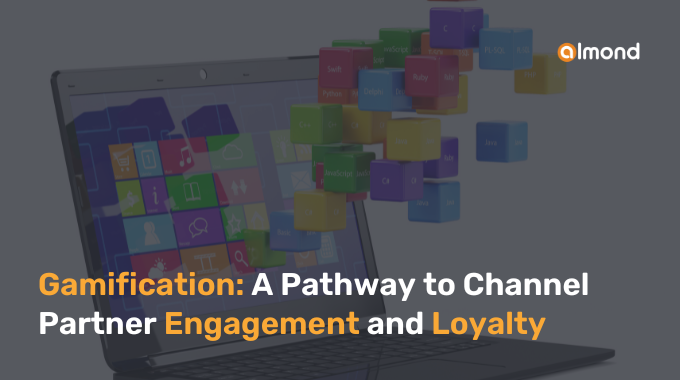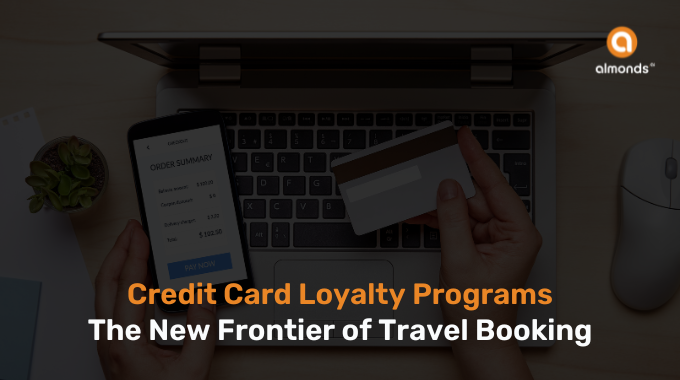Gamified loyalty programs have become a popular buzzword in recent years as more and more businesses look for ways to engage customers and channel partners through game-like experiences. But while gamification can be a powerful tool in a customer loyalty program, it also comes with risks and pitfalls that must be carefully navigated.
In this blog post, we’ll explore gamification’s background, core elements, and ethical game designs and how it leads to channel partner engagement and loyalty. Finally, we’ll explore the boundaries that must be watched to manage the risk of dissatisfaction.
Background on Game Theory
Game theory is one branch of mathematics that deals with the study of strategic decision-making. It was first introduced in the 1940s by mathematician John von Neumann and economist Oskar Morgenstern. It was initially developed as a tool for simplification of economic behavior. Still, it has since been applied to various fields, including psychology, political science, and computer science.
The basic principle of game theory is that people make decisions based on their understanding of the rules and their perceptions of the other’s strategies. While in real life, they make decisions based on rational calculations of the costs and benefits of different options.
Thus, gamification is the process of applying game elements and mechanics to non-game contexts, such as marketing or employee training. The goal is to engage users (that are channel partners and customers) and motivate them to take action by creating a sense of fun and competition.
Core Elements of Gamification
There are several core elements that are fundamental to gamification. These include:
- Goals
In order to create a sense of purpose, gamification must have clear goals that users are working towards. These goals should be specific, measurable, and achievable.
- Rewards
Rewards provide them with a sense of accomplishment and encourage continued engagement. Rewards, such as badges, discounts, or exclusive access, can be tangible or intangible. - Competition
It makes them strive to outperform their peers. It can include leaderboards, rankings, and other forms of social comparison. - Feedback
They need feedback to understand how they are doing and feel motivated to continue. It includes progress bars, point systems, and other visual cues.
What is Ethical Game Design
As with any tool, gamification can be used for both good and bad. It’s important to ensure that gamification is designed ethically to respect users’ autonomy and privacy.
Key elements of ethical game design are:
- Informed consent:
They should understand what data is being collected and how it will be used. They should also have the option to opt out of gamification if they choose. - Fairness:
Gamification should be designed to be fair to all of them, regardless of their skill level or experience. It means avoiding pay-to-win mechanics or other forms of unfair advantage. - The well-Being of Users:
Gamification should be designed with their well-being in mind. That means avoiding addictive or harmful behaviors, such as encouraging excessive screen time or promoting unhealthy habits.
Ethical Game Design to Channel Partner Loyalty
Gamification can be a powerful tool in customer loyalty programs and B2B channel marketing. Once they are assured that the gaming elements are constructed on ethical grounds, they use them frequently. Clear goals, feedback, and reward process start spreading their magic here.
As channel partners or customers engage with the brands, they start getting to know about brands, products, and services as soon as they are released. This kind of engagement brings out a sense of belonging, leading to loyalty and higher revenue generation.
If you want to know more about the step-by-step process of how to use gamification to increase channel partner engagement, click here.
The Power and Influence of Gamification
Effectively designed gamified loyalty programs have a powerful influence on behavior. Tapping into the intrinsic human desire for achievement, competition, and rewards can motivate users to take specific actions or change their behaviors.
For example, airline loyalty programs often use gamification in their frequent flyer programs to encourage customers to fly more frequently and reach higher loyalty tiers. By offering rewards such as free flights, upgrades, or exclusive lounge access, airlines incentivize customers to choose their services over competitors.
Similarly, fitness loyalty programs‘ apps and wearables use gamification to encourage users to stay active and achieve their health goals. By setting targets, providing real-time feedback, and rewarding achievements, these apps motivate individuals to engage in regular physical activity.
“With Great power comes Great Responsibility!” For that, designers and marketers must use this tool ethically and responsibly, considering the potential impact on individuals’ lives and well-being.
Boundaries and Managing Dissatisfaction
While gamification can be a powerful motivator, some boundaries must be carefully managed to prevent dissatisfaction and negative experiences.
- Overuse of gamification elements:
When every aspect of a user’s interaction is gamified, it can lead to fatigue or a sense of manipulation. It should be used strategically and sparingly, focusing on key areas where it can provide the most value and engagement. - Lack of personalization:
Gamification experiences should be tailored to individual preferences, needs, and abilities. One-size-fits-all approaches may only resonate with some of them and can result in dissatisfaction. Customized and personalized loyalty programs can enhance the user experience and drive loyalty.
Furthermore, clear communication and transparency are essential in managing expectations. Channel partners should clearly understand how the gamification elements work, what rewards they can expect, and any limitations or conditions associated with the program. It will prevent disappointment or feelings of being misled.
Downsides of Gamification
While gamification offers numerous benefits, it’s also important to acknowledge the potential downsides. These include:
- Superficial Engagement:
Gamification can sometimes create shallow engagement, where users focus solely on the rewards or achievements rather than the underlying value or purpose of the experience. It leads to a lack of long-term loyalty or genuine connection to the brand or product. - Loss of Congenital Motivation:
In some cases, excessive use of extrinsic rewards in gamification can diminish natural motivation. When rewards become the sole driving force, individuals may lose interest or engagement once the rewards are removed. - Privacy and Data Concerns:
Gamification often involves collecting and analyzing user data. It raises concerns about privacy and data security. Brands must handle customer data responsibly and transparently to maintain trust.
Bottom-Line Message for Marketers
As marketers develop their gamification strategies, focusing on ethical design, transparency, and personalized experiences is crucial. By considering the potential impacts on customers’ well-being, fostering inclusivity, and managing expectations, businesses can create engaging gamification experiences that drive customer loyalty.
Gamification should have means to enhance the customer’s journey and channel partner engagement rather than a manipulative tool solely focused on extracting desired behaviors. Marketers should prioritize providing value, meaningful interactions, and a sense of accomplishment for their channel partners and customers.







